This homemade eggnog is made with eggs, milk, sugar and spices, and is warmed over the stovetop to cook the eggs. (No raw eggs!)
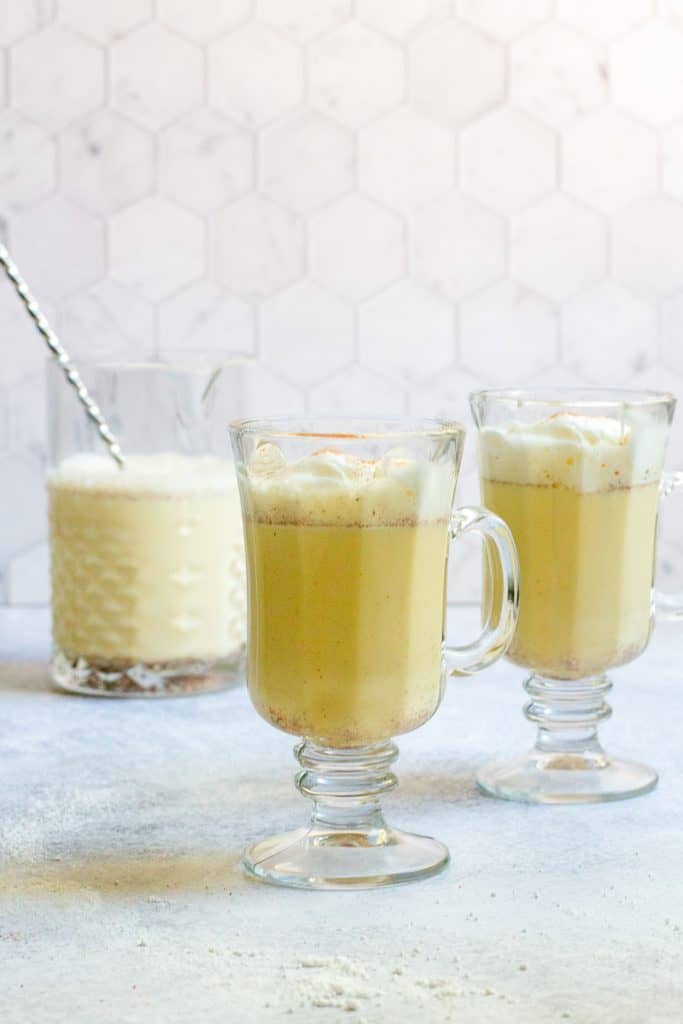
My friend Sally and I recently had our second annual eggnog-making party via video-chat.
It's a new tradition.
I've tried a few different versions of homemade eggnog over the years, but the version Sally makes is my favorite.
Her cooked eggnog also makes me less nervous than the raw-egg versions I've tried in the past. This cooked homemade eggnog is the one she shared with me, with just a few small tweaks.
And while I have nothing against store-bought eggnog, those versions can have a surprisingly long list of ingredients.
If you're an eggnog lover, try making this easy, homemade version. It takes just a few minutes of active time and gives you full control over the ingredients.
Does Cooked Eggnog Taste The Same as Raw?
Flavor-wise, I like both raw and cooked homemade eggnog. They're both delicious, but the cooked version has more of that delicious, custard-like flavor.
I find that cooked homemade eggnog is just a tiny bit thicker than raw homemade eggnog, in a good, coat-the-back-of-the-spoon kind of way.
What Equipment Do I Need?
To start, you'll need a mixing bowl and a saucepan.
This eggnog is simplest to make when you have either a stand mixer with a whisk attachment or an electric beater.
In the photos, I use my Cuisinart stand mixer with the whisk attachment.
If you want to make it by hand, you'll just need to whisk really vigorously!
The only other kitchen gear I highly recommend is a digital thermometer.
Do I Really Need a Digital Thermometer?
It is possible to successfully make cooked homemade eggnog without one, but you'll have more fool-proof, consistent results with a digital thermometer.
If you over-cook the eggnog, it'll thicken too much (like custard). And if you're cooking it to be food-safety conscious, then you'll want to ensure that you reach your desired temperature.
Again, I highly recommend using a digital thermometer.
In the recipe, I recommend a temperature range of 160 to 165 degrees Fahrenheit. The FDA recommends 165 degrees and the Egg Safety Center recommends 160 degrees.
What Can I Do with Leftover Homemade Eggnog?
Once your eggnog is made, try adding it to a latte or a French toast bake for an extra luxurious taste!
Or, for variation, make pumpkin eggnog.
Can I Use Dairy-Free Milk?
We have not tested this with dairy-free milk, but I see no reason why you couldn't.
Keep in mind that some dairy-free milks do not thicken well, so your eggnog might be thinner.
Also, make sure to choose a milk that works well with custard flavors (such as almond or coconut milk).
How to Make Cooked Homemade Eggnog
Start by warming the milk over low heat on the stovetop.
Do not allow it to get too hot! You don't want the milk to simmer, but just to be warmed.
Meanwhile, combine eggs, egg yolks, sugar, vanilla and nutmeg either in a stand mixer basin or in a large bowl.
Then whisk until the eggs are frothy.
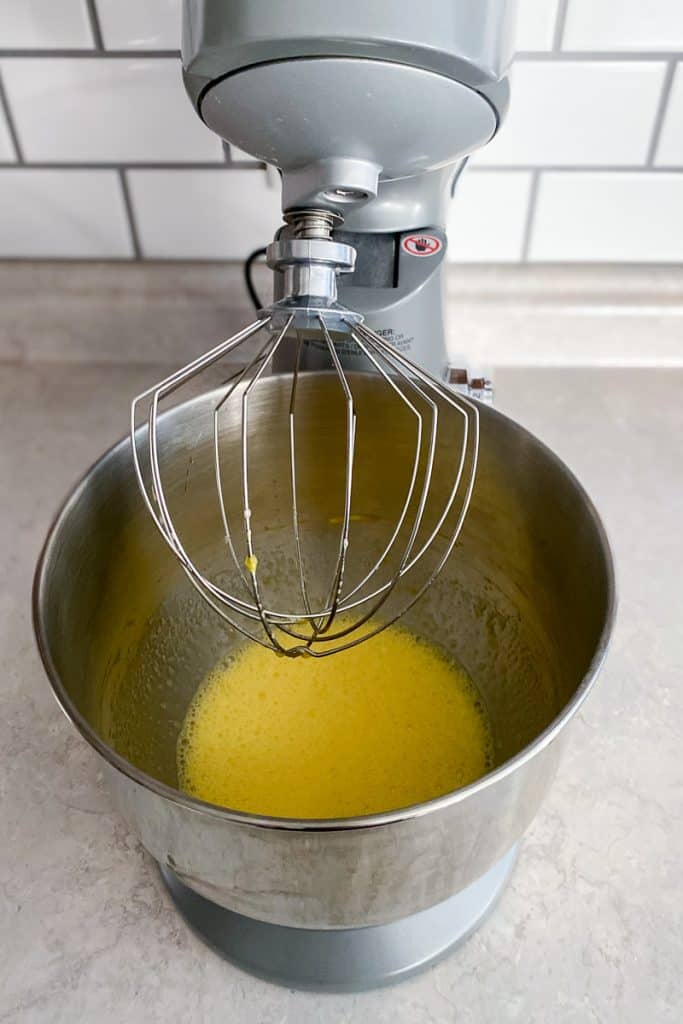
Once the milk is warm, slowly pour it into the egg and sugar mixture, making sure to continue whisking constantly.
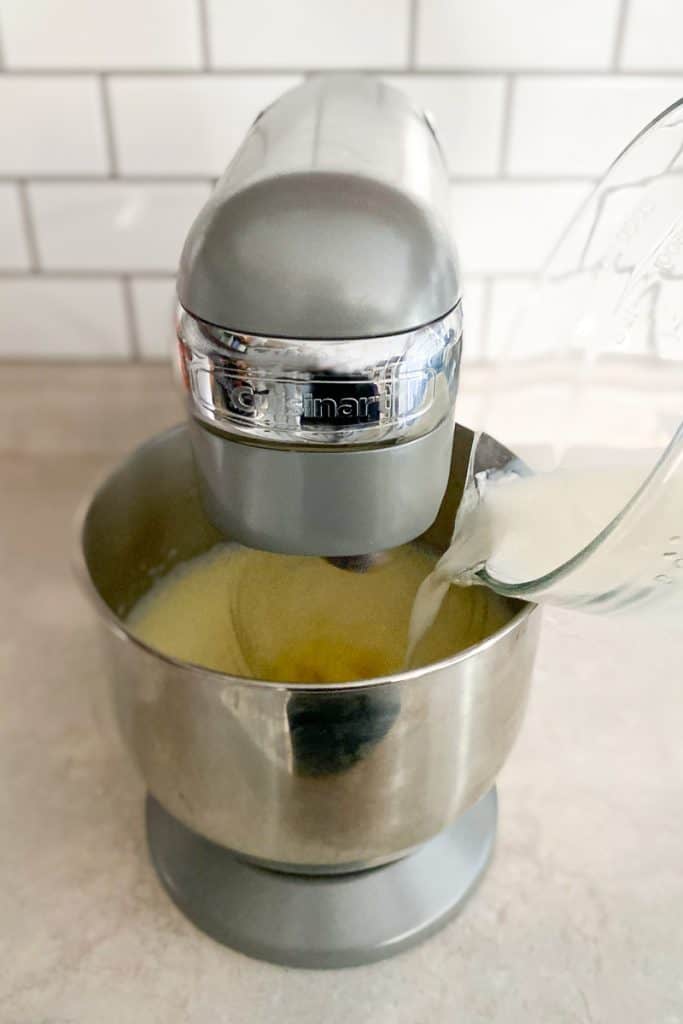
When the mixture is fully blended, pour it all into a large saucepan, and heat over medium-low heat.
Keep up a constant pace of stirring for 2-3 minutes.
Your goal is for the eggnog to reach 160-165°F. The liquid will just barely begin to simmer.
It may be difficult to judge the state of the liquid through the foam, so this is when the digital thermometer becomes essential!
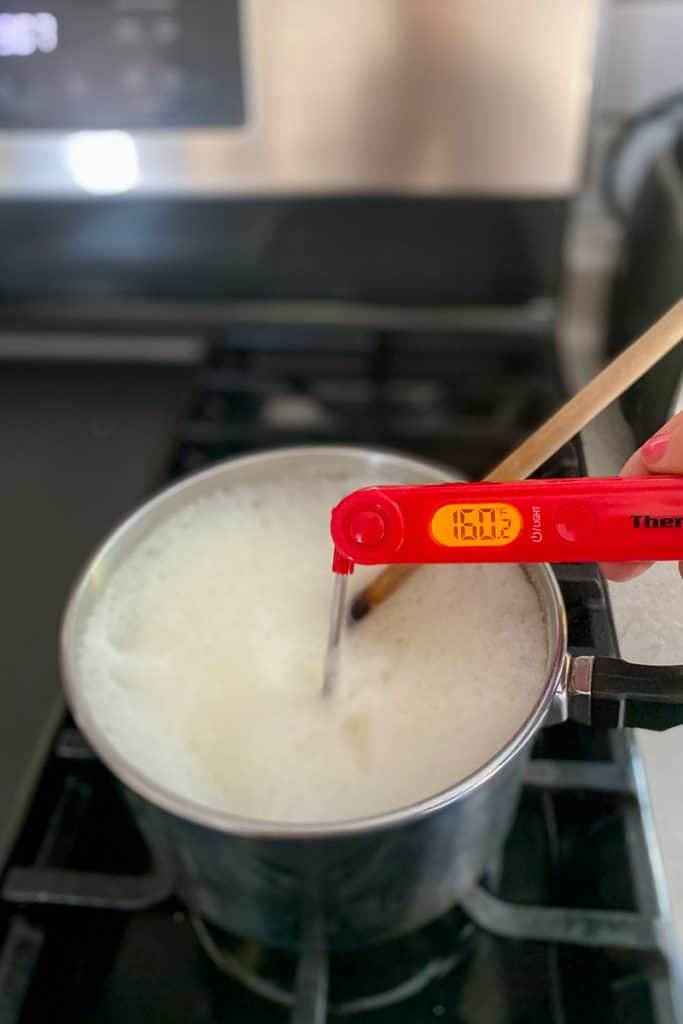
Once the eggnog has reached the ideal temperature, do not continue cooking, or the eggnog will turn into a thick custard. Remove it from the heat.
At this point, you may decide to strain the eggnog through a mesh sieve. This would be a good idea if there's any chance that the egg over-cooked.
Tiny scrambled egg bits are not what you want in homemade eggnog!
If the egg seriously over-cooked, don't panic! Just strain the mixture a couple of times and try whisking in more milk. If the consistency doesn't turn out just right, you can always use that batch for other recipes like the above-mentioned French toast.
If you're turning this eggnog into a cocktail, you can either stir in the bourbon now, or wait and do that with the individual servings.
Before serving, chill the eggnog for at least three hours.
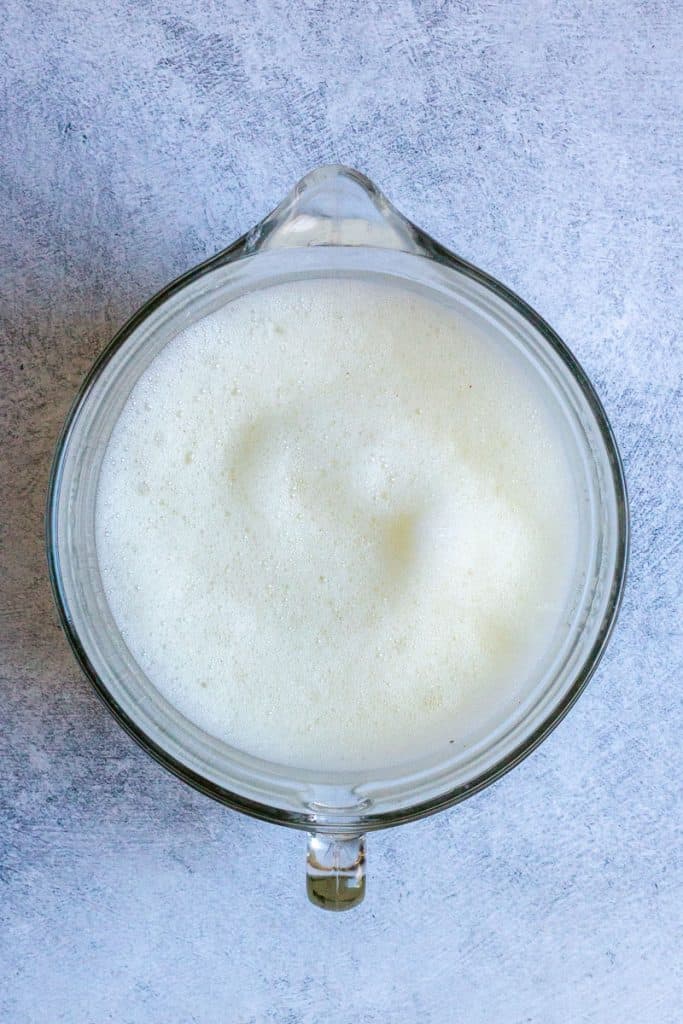
The light foaminess will deflate in the refrigerator, so if you want to re-create it at the time of serving, simply give the eggnog another round of vigorous whisking!
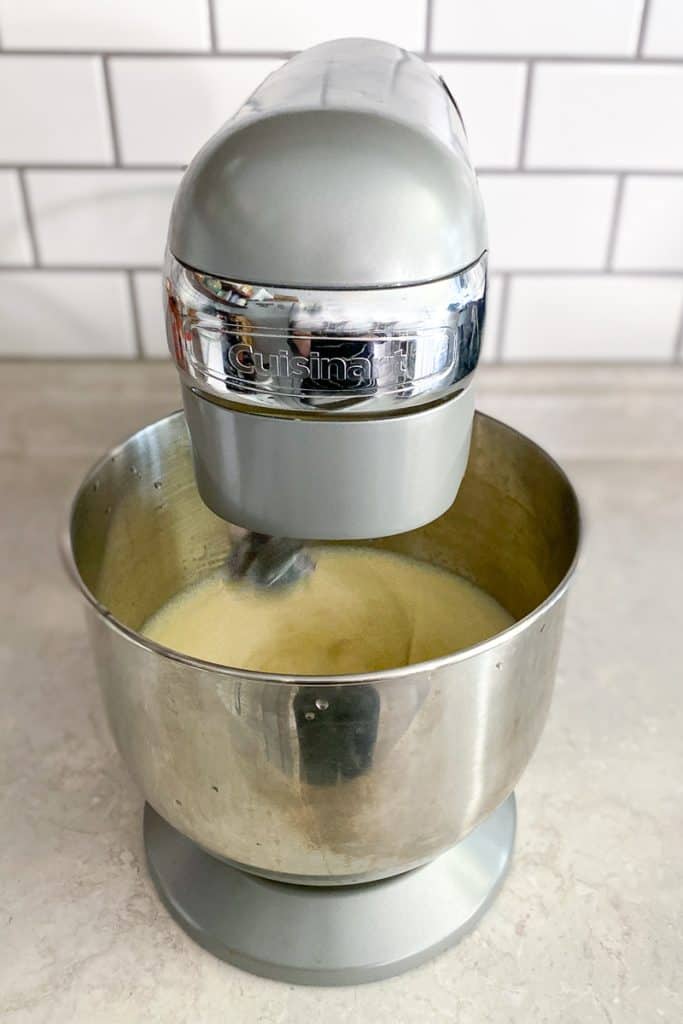
At last, pour the eggnog into individual glasses, top with a little whipped cream and a dusting of nutmeg, and enjoy!
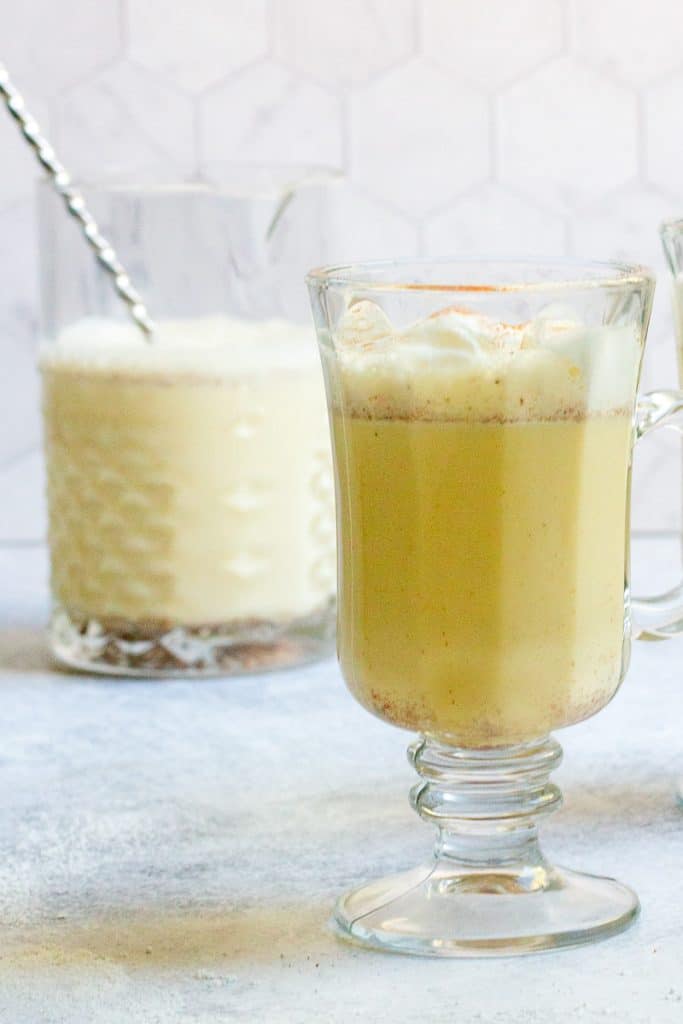
Homemade Eggnog (Cooked)
Equipment
- electric hand mixer OR stand mixer with whisk attachment
Ingredients
- 4 cups milk (2% or whole, not skim)
- 6 eggs
- 2 egg yolks
- ½ cup sugar
- 1 teaspoon vanilla extract (optional)
- ¼ teaspoon freshly ground nutmeg, plus more for serving Or use pumpkin pie spice
- 4 ounces bourbon (optional)
- whipped cream (optional)
Instructions
- Warm milk in a large saucepan over low heat until the milk is just warm, not yet simmering. (If your milk begins to simmer, allow it to cool down slightly off-heat.) Alternatively, microwave milk for about 4-5 minutes.
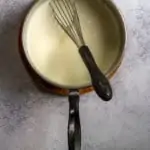
- While the milk is warming, add the eggs, egg yolks, sugar, vanilla and nutmeg to the basin of a stand mixer (using the whisk attachment.) Whisk eggs and sugar on medium speed until the eggs are frothy. Alternatively, add to a large mixing bowl and use an electric beater to whisk the eggs, or whisk vigorously by hand.
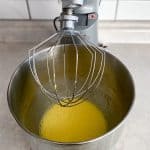
- Begin whisking the eggs again on medium speed. While whisking, temper the eggs by slowly pouring in the milk.If using an electric hand mixer or whisking by hand, whisk constantly while pouring in the milk.
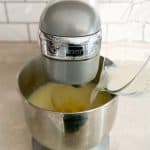
- Pour eggnog mixture into a large saucepan. (If your eggnog got especially frothy, you may need to use a larger pot.)Heat eggnog over medium-low heat, stirring constantly, for 2-3 minutes, or until the eggnog reaches 160-165°F (when the liquid will just barely begin to simmer). The liquid may be difficult to see because of foam, so I highly recommend using a digital thermometer. Do not continue cooking-- or the eggnog will thicken into a custard.
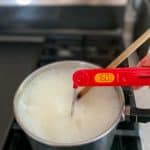
- Optionally, pour the eggnog through a fine mesh sieve to strain it. (If you're worried that you may have over-cooked your eggnog, creating tiny pieces of scrambled egg in the mixture, make sure to strain it.)To make the entire batch of eggnog into a cocktail, stir in the bourbon now. Alternatively, wait until serving and add the bourbon to individual cocktails as desired.Chill eggnog for at least 3 hours before serving (or overnight).
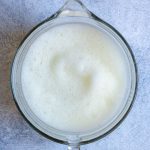
- Optionally, whisk the eggnog again before serving to recreate the foam. (The foam will deflate while chilling.)
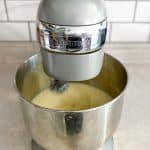
- Serve the chilled eggnog with whipped cream (if desired) and a dusting of nutmeg.
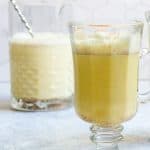
Notes
- I over-cooked my eggnog and it's too thick. Can I save it?
- Start by straining the eggnog once (or even twice) through a mesh sieve.
- Whisk it with more milk.
- Taste the eggnog. If you still think it's too thick, use it for French toast or lattes and try again with a new batch.
- I accidentally over-cooked my eggnog. It's not thick, but there are small pieces of scrambled egg. Can I save it?
- If the texture isn't overly thick and custard-like, simply strain the eggnog through a mesh sieve once (or twice). Your eggnog should be just fine.
- I turned my stand mixer up too high and over-whisked, and now there is so much foam! What do I do?
- No worries at all. Simply use a larger pot to heat your eggnog if needed. The foam will deflate while the eggnog chills.


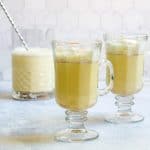



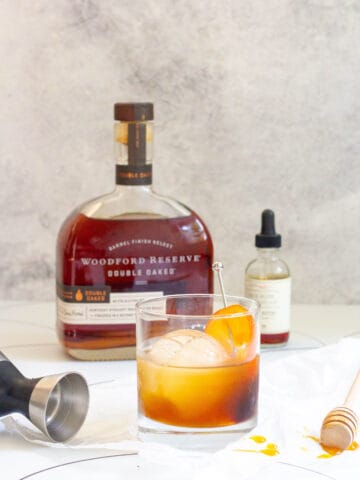
Leave a Comment: